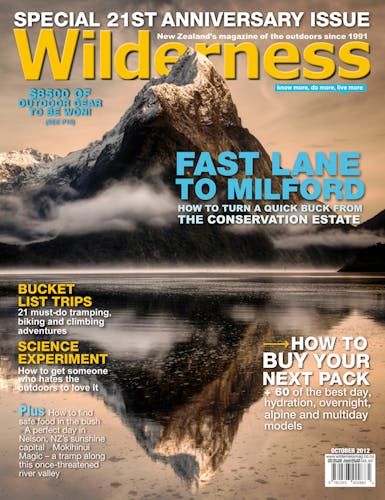Food is low down the list of survival priorities, but it’s helpful to know how to find sustenance
It requires a lot of skill, knowledge and an element of luck to find or catch food in the wild.
Most people tend to think food is a high priority in a short-term survival situation, but this couldn’t be further from the truth. Despite what your stomach and mind may be indicating, food should be given the lowest priority. Most people can go without food for between 25-35 days.
Once your rationed food has almost run out though, you need to think about gathering food from the environment. Be careful not to expend more energy than you’ll gain from the food you find.
Hunting devices such as throwing sticks, spears, traps and snares will assist greatly in obtaining food.
Food can be found in the form of plants, fish, birds, worms and mammals. Food should not be consumed unless you have a reliable water source to help digest it.
Don’t forget, it is far more important to protect yourself against the elements, to help people find you and to find and make safe water than it is to find food.
Plants: These are easy to collect but come with the risk of not knowing if they are safe to eat. Unless you are 100 per cent certain you have correctly identified the plant, you need to conduct an edibility test. Common New Zealand plants I prefer are the mamaku tree fern and totara berry.
Fish: Find a deep calm water hole, set a line or trap. A worm on the end of a hook or offal in a sock will attract fish.
Insects: Grasshoppers, crickets and weta can be eaten raw and provide mostly protein. Remove wings, legs and antennae. Huhu grubs found in rotten logs lying on the ground provide a nutritious meal – just remove the head before eating.
Worms: Dig for them in damp soil. Drop them into safe drinking water for a few minutes and they will naturally purge themselves. Eat raw.
Birds and mammals: Concentrate your efforts on small game, as it will be easier to prepare. The process being slaughter, bleed, skin or pluck, gut, portion and cook. The more you know about the animal the easier it will be to catch.
Edibility test
To determine if a plant is safe to eat, conduct this edibility test
Smell – Discard it if it smells of peaches or bitter almonds as it may contain cyanide.
Irritation – Take a small portion of the plant you are testing and rub it on the inside of your elbow. Wait 15 minutes. If no irritation, stinging, rash, or swelling occurs, touch the corner of your mouth with the plant and wait 15 minutes. If no adverse reaction presents, touch your lip and tongue with it and if there is still no reaction place on your tongue and wait 15 minutes. No reaction? Continue to the taste test.
Taste – Chew and hold in your mouth for 15 minutes. If no ill effects present, swallow a piece and wait eight hours. Eat nothing else but continue to drink water. If there are no ill effects, eat a teaspoon-size portion and wait another eight hours. If no reaction, it is safe to eat.
– Stu Gilbert is a former Air Force survival instructor now running SOS Survival Training






